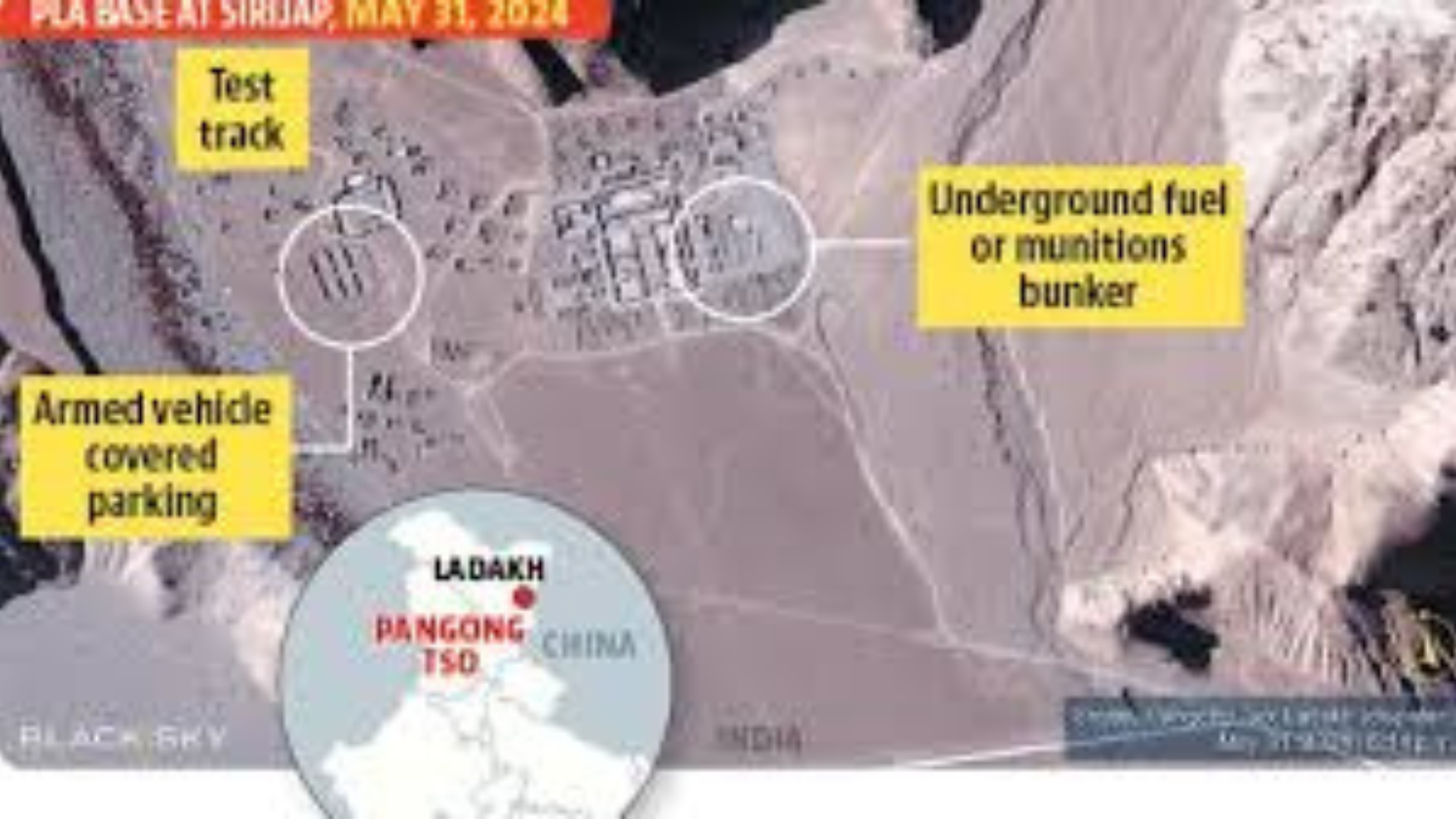Recent satellite images reveal extensive construction by China’s People’s Liberation Army (PLA) near Pangong Lake in eastern Ladakh, showcasing the establishment of underground bunkers and hardened shelters for armoured vehicles at their Sirjap base. This area, located approximately 5 km from the Line of Actual Control (LAC) and previously uninhabited until tensions escalated in May 2020, now houses critical military infrastructure.
Constructed between 2021 and 2022, the Sirjap base features underground bunkers designed to store weapons, fuel, and supplies, as observed in images provided by BlackSky, a US-based satellite imaging firm. Notably, one image from May 30 depicts large bunkers with multiple entrances, alongside smaller facilities for armoured vehicle storage, all fortified against potential air strikes with precision-guided munitions.
Analysts note the base’s strategic layout, encompassing artillery positions, defensive structures, and an extensive network of roads and trenches concealed from public mapping applications. This development underscores China’s military strategy in the region, particularly following the deadly clash in Galwan Valley in June 2020.
While Indian officials have yet to respond to the images, former Indian Army commanders emphasize the strategic necessity of underground facilities in modern warfare, highlighting the vulnerability of exposed weapon systems and supplies to aerial surveillance.
In contrast, India has bolstered its border infrastructure with numerous strategic projects aimed at enhancing military mobility and logistics support since the 2020 standoff. These efforts by the Border Roads Organisation (BRO) include the completion of key infrastructure projects, such as the Sela tunnel in Arunachal Pradesh, aimed at improving living conditions for soldiers and safeguarding equipment in forward areas.
Simultaneously, heightened Chinese military activity has been observed at Shigatse air base in Tibet and the Doklam tri-junction, indicative of ongoing strategic deployments and infrastructure developments. This includes the presence of advanced Chengdu J-20 stealth combat jets at Shigatse, potentially in response to India’s Rafale squadron based at Hasimara.
Overall, these developments underscore the escalating military dynamics in the region, influenced by strategic deployments and infrastructure advancements by both China and India.







